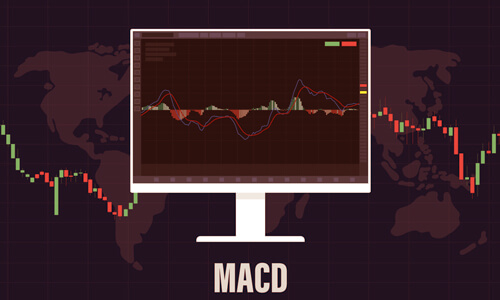Getting to know MACD (Moving Average Convergence Divergence):
A friend to Forex traders
MACD (Moving Average Convergence Divergence) is popular technical indicator used by forex traders to measure trends, momentum and potential entry/exit points. Let’s break down the mechanics, implementation and how traders see it.
Under the Hood: Who & What
The exact creator of MACD is unknown, but it gained traction in the late 1970s thanks to Gerald Appel. MACD calculates the difference between two exponential moving averages (EMA) of the price of a currency pair. Here is the basic formula:

Under the Hood: The MACD Formula
MACD includes a mixture of moving averages:
MACD Line = EMA (Price, Short Period) – EMA (Price, Long Period)
Commonly used settings are periods 12 and 26, with a third element, the signal line, designed to smooth out MACD fluctuations. The signal line is a 9-period EMA of the MACD line itself.
- MACD line: This is calculated by subtracting the 26-period exponential moving average (EMA) from the 12-period EMA. The EMA gives more weight to recent prices, making it more sensitive to price changes.
- Signal line: This is a 9-period EMA of the MACD line itself, which acts as a smoother confirmation of the MACD’s direction.
- Histogram: This is the difference between the MACD line and the signal line, shown as lines above or below the zero line.

MACD in action: Decoding the signals
By analyzing the interaction of the MACD line, the signal line and the zero line (where the MACD equals zero), traders can interpret potential market moves:
- Crossovers: When the MACD line crosses above the signal line, it indicates a potential uptrend. Conversely, a cross below the signal line may indicate a bearish turn.
- Deviation: Sometimes, price and MACD move in opposite directions. A bullish divergence occurs when prices make lower lows but the MACD makes higher lows, indicating a possible upward trend reversal. Conversely, a bearish divergence indicates a possible downward trend reversal.
- Histogram: The height of the histogram reflects the strength of the trend. Increasing bar height indicates strengthening momentum, while decreasing bars indicate decreasing momentum.
I remember: MACD is a trend-following indicator, not an absolute predictive indicator.
The Marketer’s Perspective: Friend or Foe?
Most forex traders recognize the value of the MACD as a trend and momentum tracking indicator. Here’s what they have to say:
Advantages:
- Simplicity: Easy to understand and interpret with clear visual cues.
- Here’s the trend: It identifies current trends and potential reversals.
- Momentum: It measures the force behind price movements.
Disadvantages:
- Incorrect signals: It can produce misleading signals, especially in volatile markets.
- Confirmation Bias: Traders may overemphasize MACD signals and neglect other factors.
- Limited application: It is not suitable for detecting overbought or oversold conditions.

In total: Many traders find the MACD a useful tool, but it is important to understand its limitations and use it in conjunction with other analysis techniques for a well-rounded trading strategy.
Bonus Tip: Experiment with different MACD settings to see what works best for your trading style and preferred timeframe.
The Final Word
MACD is a valuable tool for forex traders, but it is not a magic formula. Use it in parallel other technical analysis methods and fundamental analysis to make informed trading decisions. Remember, back-checking the MACD with historical data and practicing on a demo account can help you understand its strengths and limitations in your particular trading strategy.
Denial of responsibility: This article is for informational purposes only and should not be considered financial advice. Consult a qualified financial advisor before making any investment decision.
Good trading
may the dice always be in your favor!

